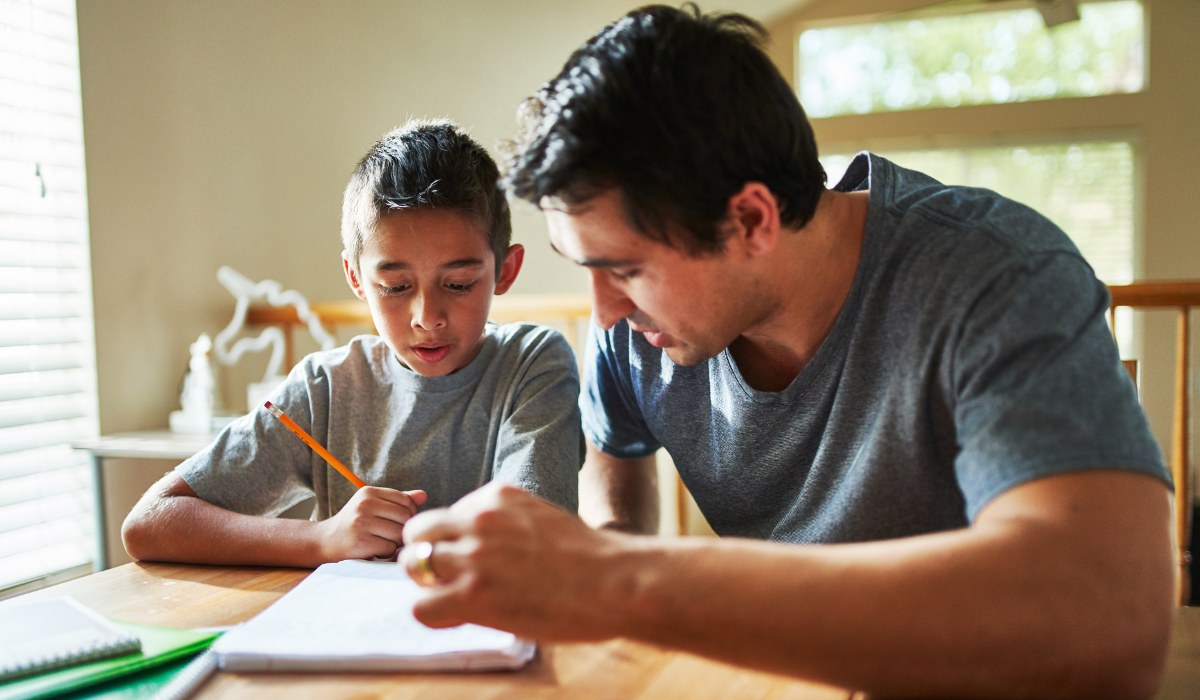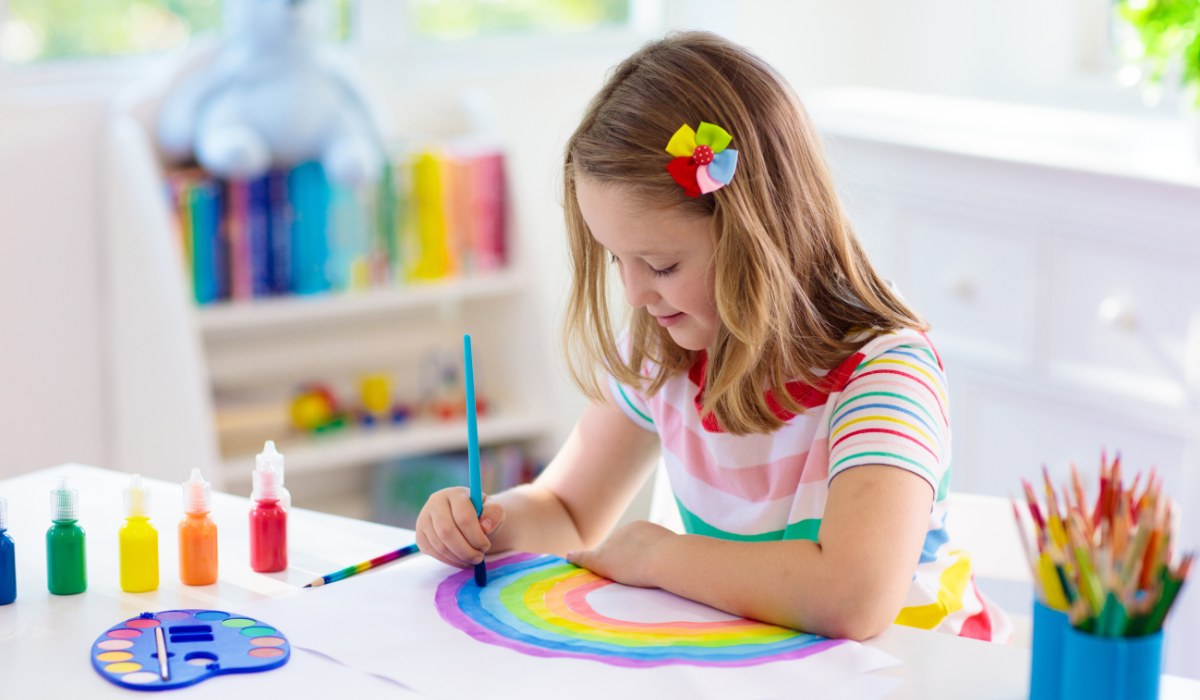Potty Training An Autistic Child

Understanding the Unique Journey of Toilet Training for Autistic Children
Potty training an autistic child involves tailored approaches that consider developmental delays, sensory sensitivities, communication barriers, and behavioral challenges. Recognizing signs of readiness, creating supportive environments, and employing evidence-based strategies are crucial to fostering independence. This article explores effective methods, environmental adjustments, signs of readiness, and resources to guide caregivers through this essential developmental milestone.
Understanding the Challenges and Typical Delays in Toilet Training Autism Spectrum Children
What are the challenges faced by autistic children during potty training?
Autistic children often face unique hurdles when learning to use the toilet. Developmental delays common in autism can slow down the acquisition of toileting skills. Some children struggle with breaking routines, which makes transition to toilet training difficult. Communication challenges are also significant, especially for nonverbal children who might find it hard to signal their needs. Additionally, sensory sensitivities—such as discomfort with bathroom environments due to noise, brightness, or tactile sensations—can make the process more stressful. Anxiety and resistance to change further hinder progress, requiring caregivers to use patience, visual supports, and tailored strategies to support learning.
How do delays in toilet training impact children’s social and health outcomes?
Delays in developing toileting skills can have broad implications. Extended diaper use often diminishes hygiene, increases discomfort, and may contribute to social stigma or feelings of embarrassment. Moreover, toilet training delays may limit children’s participation in social activities, such as early schooling or childcare routines, impacting social development. Health-wise, persistent constipation or urinary issues related to developmental delays can lead to medical complications. Achieving toileting independence not only promotes better hygiene and health but also boosts self-confidence and social engagement.
Are toilet training challenges in autistic children comparable to those in other developmental conditions?
Children with autism typically experience more pronounced delays in toilet training compared to peers with other developmental disabilities. They often begin toilet training at older ages, sometimes taking a year or longer to become consistently independent. Unique barriers such as sensory processing differences, resistance to routine changes, and communication setbacks make the process particularly challenging for autistic children. While children with other conditions may also struggle, the combination of sensory sensitivities and behavioral features characteristic of autism often require customized approaches for successful toilet training.
| Aspect | Typical Development | Children with Autism | Notes |
|---|---|---|---|
| Average age to toilet train | around 2-3 years | often later, around 3-4 years or older | Delays influenced by developmental factors |
| Communication needs | usually verbal | may require visual supports or alternative communication | Supports are crucial for progress |
| Sensory sensitivities | less common | common, affecting comfort | Environment adjustments help |
| Resistance to change | minimal | common | Needs gradual routines |
| Toilet independence | sometimes achieved spontaneously | often requires structured training | Patience and consistency are vital |
Understanding these specific challenges enables caregivers and professionals to adopt effective strategies, ensuring that children on the autism spectrum can develop toileting skills that enhance their independence and well-being.
Signs of Readiness in Autistic Children for Effective Toilet Training
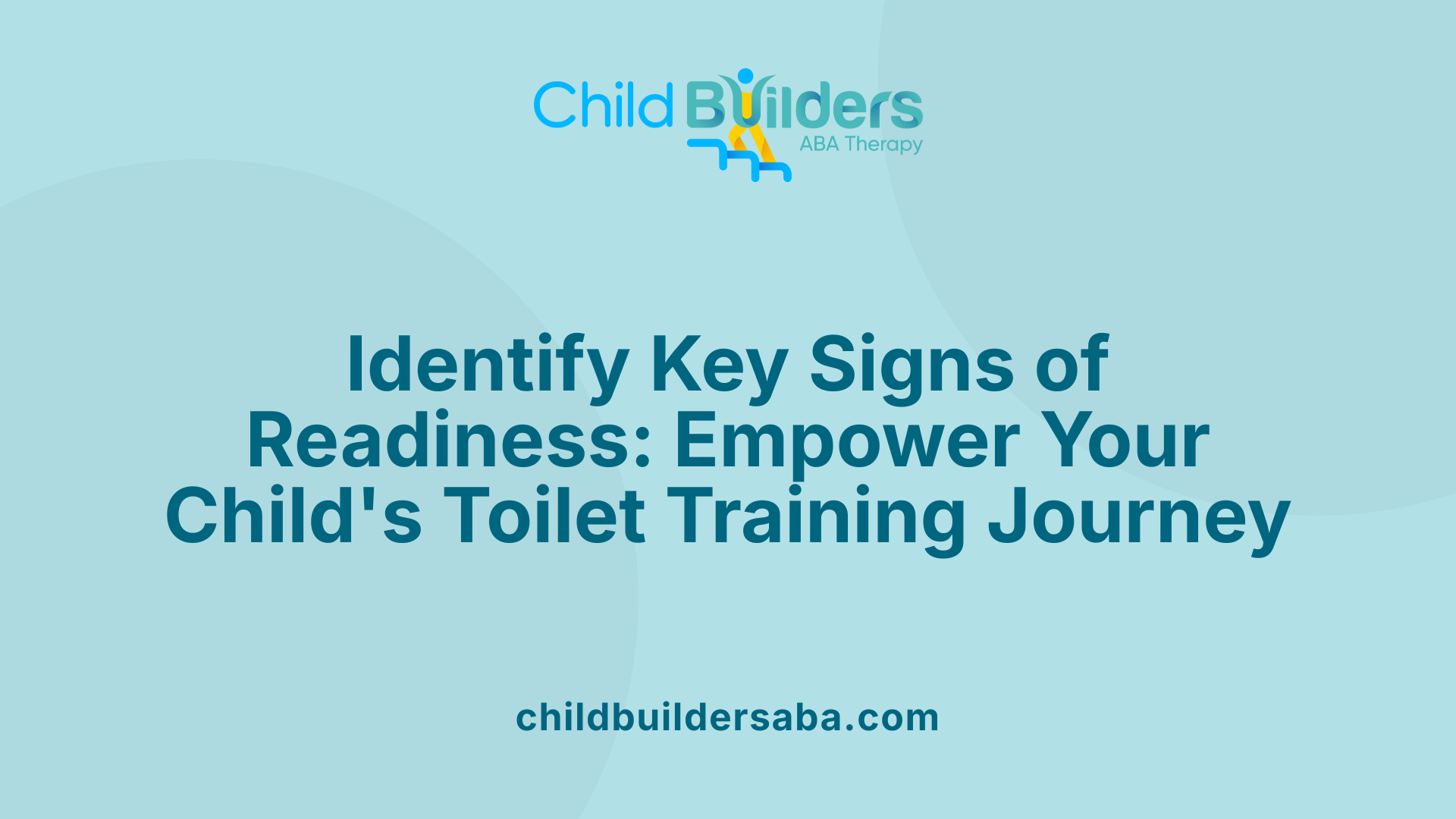
What signs indicate that a child with autism is ready for toilet training?
Autistic children often demonstrate certain behaviors that suggest they are prepared to begin toilet training. Key signs include the child's ability to recognize and respond to the feeling of being wet or soiled, which shows an emerging awareness of bodily sensations. Additionally, following simple instructions, such as sitting on the potty or washing hands afterward, indicates understanding and compliance. Showing interest in bathroom routines—like observing parents or siblings during their toilet use—also signifies readiness. Importantly, a child who can stay dry for at least two hours during the day is likely developing bladder control, a crucial milestone. Finally, the child's ability to make it to the toilet with assistance demonstrates motor coordination and motivation, which are essential for successful training.
Why is it important to assess both physical and emotional readiness?
Assessing readiness involves more than checking physical capabilities; it also requires understanding the child's emotional preparedness. Even if a child can physically use the toilet, they might not be emotionally calm or motivated enough to engage in the process. Ensuring that a child is both physically and emotionally ready helps prevent stress and frustration. When children are developmentally prepared on both fronts, they are more likely to respond positively to toilet training routines, leading to more successful and smoother transitions.
Should professional evaluations be incorporated before starting toilet training?
Yes, consulting healthcare professionals such as paediatricians or occupational therapists before starting is highly recommended. Medical examinations can identify or rule out underlying health issues like constipation or urinary infections which might hinder training. Professionals can also assess the child's overall development and readiness, provide tailored strategies, and address specific sensory or behavioral needs. This collaborative approach ensures that toilet training is safe, appropriate to the child's individual circumstances, and ultimately more effective.
| Signs of Readiness | Description | Additional Notes |
|---|---|---|
| Awareness of wet/soiled diapers | Recognizing when they are wet or dirty | Indicates bodily awareness |
| Ability to follow instructions | Doing simple tasks when asked | Shows comprehension |
| Interest in bathroom routines | Watching or wanting to mimic actions | Demonstrates curiosity and motivation |
| Staying dry for at least two hours | Consistent dry periods during the day | Sign of bladder control |
| Making it to the toilet with help | Reaching and sitting on the potty | Shows motor skill development |
Focusing on these signs within a supportive and consistent routine can set a solid foundation for successful toilet training.
Strategies and Techniques for Supporting Autistic Children During Toilet Training
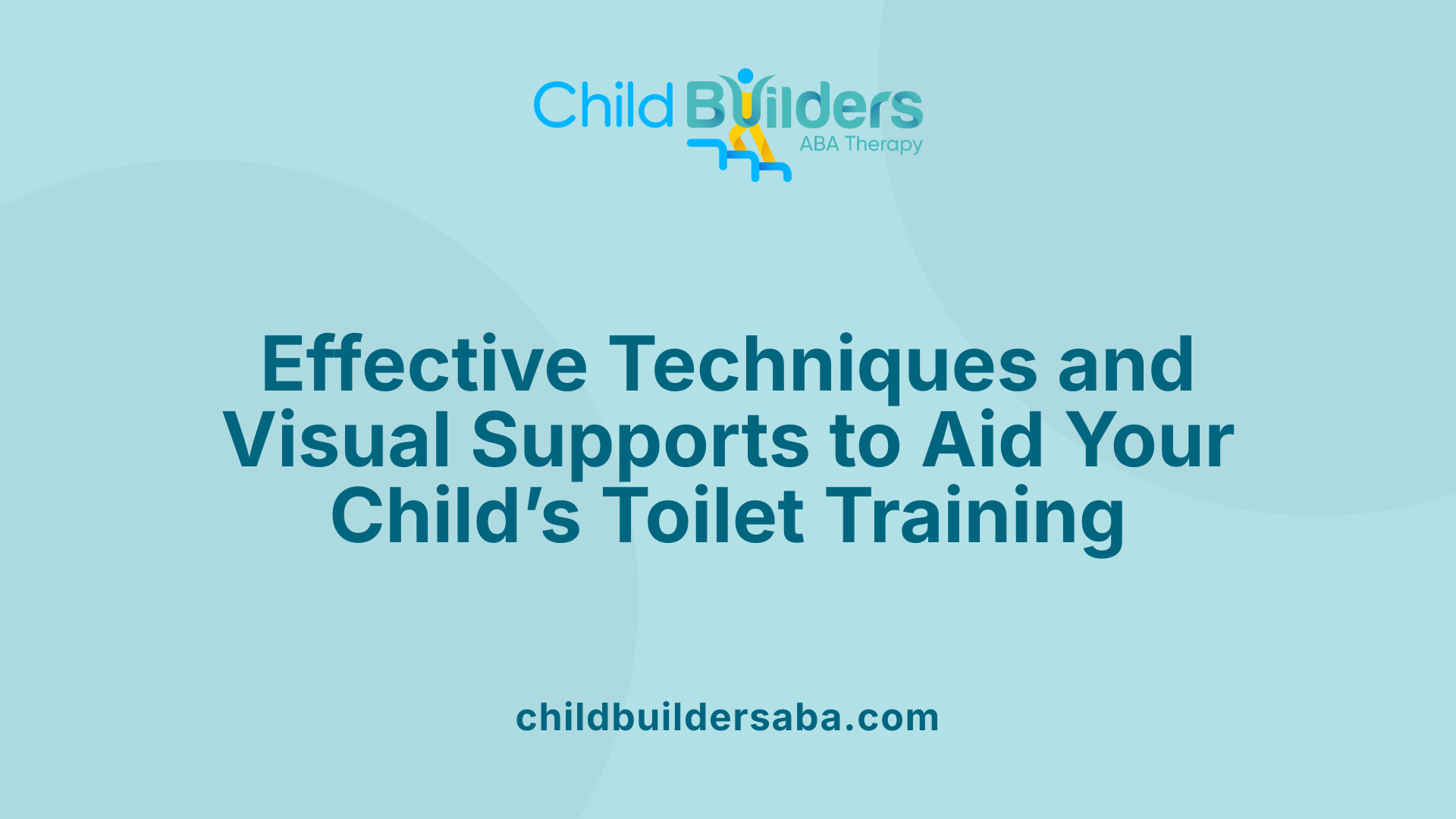
What are effective strategies to help autistic children with potty training?
Supporting autistic children in toilet training requires a tailored approach that considers their unique needs and challenges. Effective methods include breaking down the training process into small, manageable steps, allowing the child to master each before moving on. Using visual supports such as picture schedules, social stories, and visual cues helps children understand what to do next, providing predictability and reducing anxiety.
Reinforcing successes immediately with rewards like toys, treats, or preferred activities motivates children and builds positive associations with toilet use. Consistent routines, such as scheduled sit times, further help establish a predictable environment that aligns with their preference for routine and familiarity. Patience and persistence are vital, along with involving caregivers and specialists to adapt strategies as needed.
How can behavior therapy support toilet training?
Behavioral therapy plays a crucial role in toilet training for children with autism. Therapists use operant conditioning techniques—rewards for successful behaviors and gentle consequences for setbacks—to reinforce desired skills. They tailor interventions to each child's specific challenges, such as communication delays or sensory sensitivities.
Systematic reinforcement and structured routines help children understand expectations and develop independence. If persistent difficulties occur, behavior therapists can assess the child's particular barriers, modify strategies, and provide ongoing support to promote progress.
What role do visual aids play in this process?
Visual supports are fundamental in helping autistic children grasp the steps involved in toilet training. Picture schedules or photo cards illustrate each step—from sitting on the toilet to wiping and handwashing—making the process clear and manageable.
Social stories, which are short narratives with pictures, can prepare children for changes and routine transitions, easing anxiety and encouraging cooperation. Communication devices, such as PECS or visual prompts, empower children to signal their needs, which is especially helpful for those with limited verbal skills.
In summary, integrating visual supports, positive reinforcement, consistent routines, and behavioral strategies creates an effective framework for toilet training children with autism. These approaches foster understanding, independence, and confidence, making the process more successful and less stressful for all involved.
Environmental Adjustments and Sensory Considerations for Better Outcomes
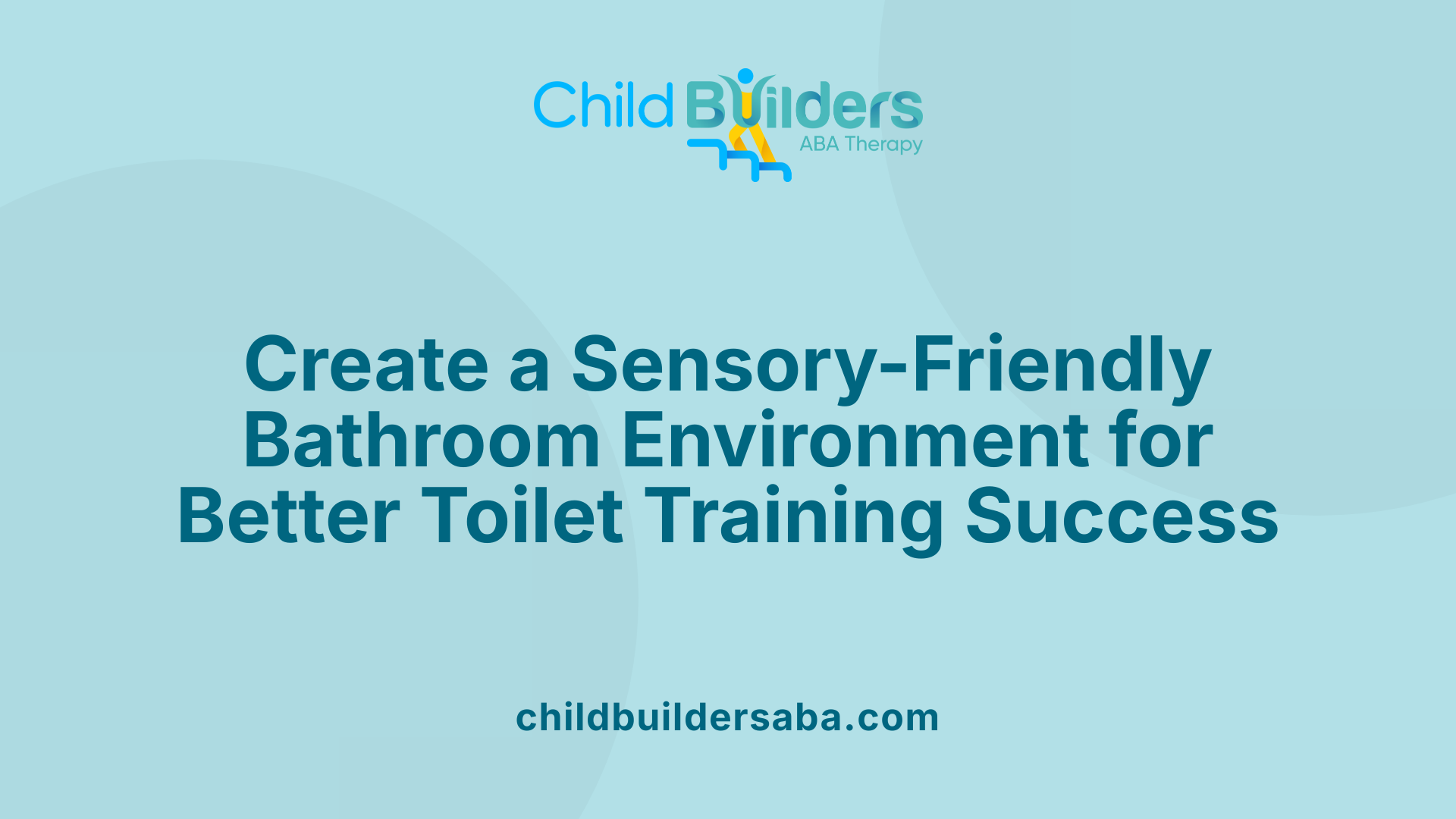 Supporting children with autism through toilet training requires thoughtful environmental adjustments and sensory accommodations to foster comfort and success.
Supporting children with autism through toilet training requires thoughtful environmental adjustments and sensory accommodations to foster comfort and success.
One of the foundational steps is to modify the bathroom environment to be more sensory-friendly. This involves creating a calming space by adjusting lighting—using soft, warm lights instead of bright fluorescent bulbs—and minimizing noise with soundproofing or noise-canceling headphones if needed. Adding tactile toys or calming music can help reduce anxiety. Ensuring the bathroom is accessible, safe, and comfortable helps children feel secure during toileting.
Sensory sensitivities significantly influence toilet training progress. Many children on the spectrum are hypersensitive to brightness, sounds, and tactile sensations, which can cause discomfort and resistance to using the toilet. To address this, caregivers can implement accommodations such as dimming lights, using sensory-friendly fixtures or toilet seats, and providing ear defenders or textured mats. These adjustments make the environment more acceptable and decrease distress.
Several practical tools can simplify toilet training for children with sensory and motor challenges. Footstools or small step stools enable children to reach the toilet comfortably and maintain proper positioning. Training seats or insert seats minimize contact with unfamiliar or uncomfortable surfaces. Visual aids, like picture charts or schedules, clarify the steps involved, helping children understand and anticipate their toileting routine. Familiarization with comfortable seats and visual routines encourages independence and confidence.
Gradually introducing children to the bathroom environment through routines and positive reinforcement builds familiarity and reduces anxiety. Using real or picture-based visual supports for each step, along with social stories that describe the process in a simple, engaging way, can make potty training more predictable. Consistent exposure and patience allow children to adjust at their own pace.
Incorporating these environmental and sensory considerations creates a more positive, supportive setting for children with autism, resulting in increased participation and success in toilet training journeys. Tailoring modifications to individual sensory profiles is essential for achieving the best outcomes.
Age Range and Typical Developmental Timeline for Toilet Training in Autism
What is the typical age range for toilet training children with autism?
Children with autism usually begin toilet training at a later age compared to their neurotypical peers. Most autistic children are typically ready to start toilet training between the ages of 3 and 6 years. However, full bladder and bowel control may not be achieved until age 6 or even later. This delay is often linked to developmental differences, such as slower development of motor skills, communication challenges, and sensory sensitivities.
Why is there variability in toilet training age among children with autism?
The age at which children with autism become toilet trained varies widely. Several factors influence this timeline, including their overall developmental level, sensory processing differences, communication abilities, motivation, and health issues like constipation. Some children may show signs of readiness earlier, but others might need more time and tailored strategies. Recognizing these individual differences is essential for fostering successful toilet training.
Can toilet training begin earlier than age three?
Starting toilet training before the age of three is possible for some children with autism, especially with early intervention and preparation. Successful early training often involves observing signs of readiness, such as expressing discomfort with dirty diapers, following simple instructions, and showing an interest in bathroom routines.
Factors influencing the age of toilet training readiness
Several elements impact when a child is ready for toilet training:
- Developmental skills: Ability to follow instructions, pull pants up and down, and recognize bodily signals.
- Communication: The capacity to signal needs or use alternative communication methods.
- Sensory sensitivities: Tolerance of bathroom environment, toilet seat, and cleaning rituals.
- Health issues: Conditions such as gastrointestinal problems or constipation can delay training.
- Routine and motivation: Consistency in routines and child's interest in independence.
Visual Summary of Toilet Training Timeline
| Age Range | Typical Developmental Milestones | Influencing Factors | Additional Notes |
|---|---|---|---|
| 18-24 months | Interest in toilet activities, ability to sit briefly | Communication, motor skills | Some children may start earlier if development allows |
| 3-6 years | Usually mastered bladder and bowel control | Sensory sensitivities, health, motivation | Longer timeline often seen in children with autism |
| 6+ years | Ongoing development, some may still not be fully trained | Individual developmental trajectory | Patience and tailored support are essential |
Understanding and respecting the individual timeline for each child with autism can help caregivers provide suitable support and reduce frustration. Early preparation, patience, and consistent routines are important components that can facilitate progress at the child's own pace.
Evidence-Based Approaches and Professional Support for Toilet Training
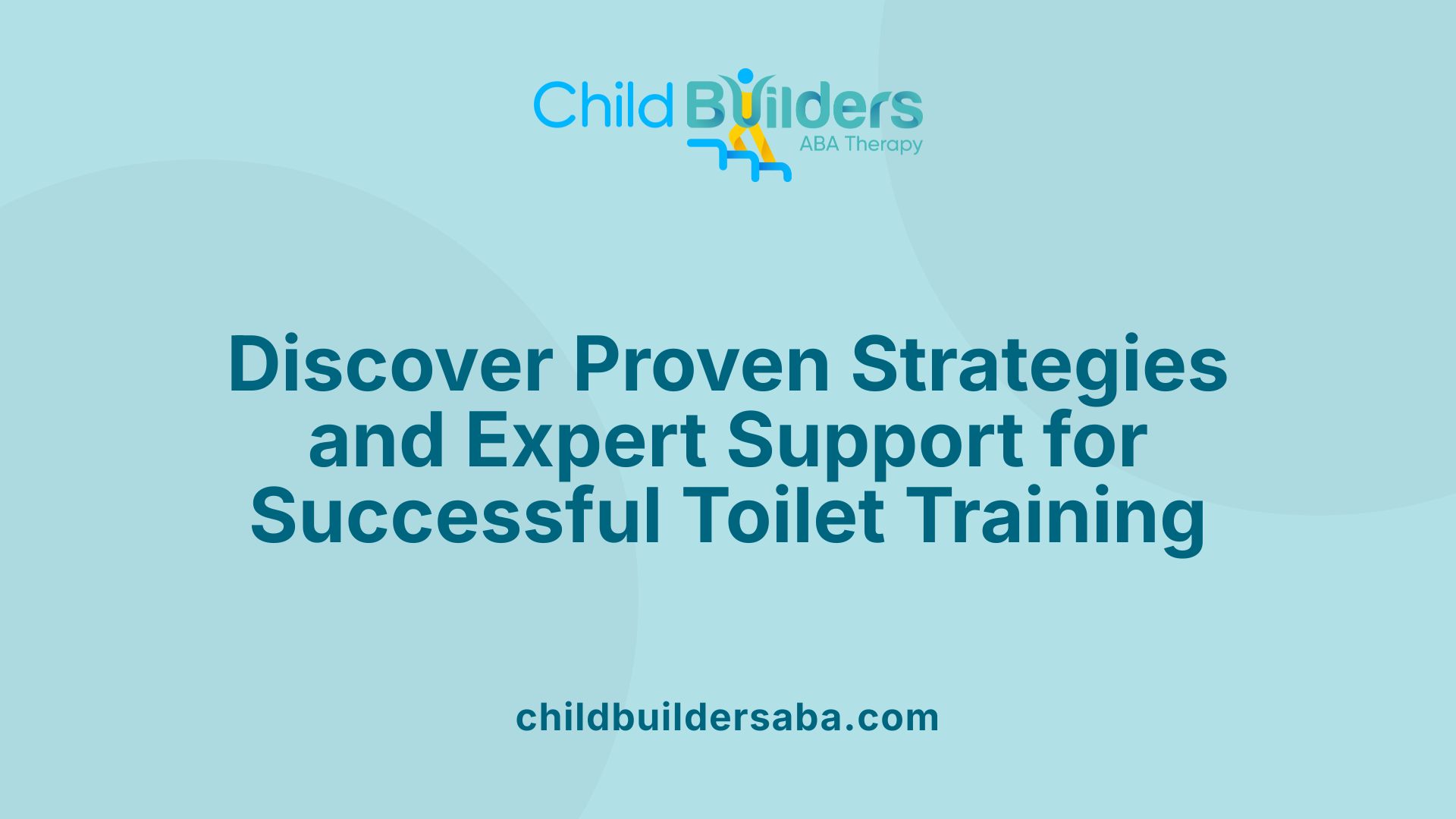
Are there evidence-based methods for toilet training autistic children?
Many professionals recommend specific, research-supported strategies for toilet training children with autism. These include operant conditioning techniques, where positive reinforcement is used to encourage desired behaviors. Visual supports, such as picture schedules, social stories, and communication aids, are also widely used to enhance understanding and reduce anxiety.
Social stories offer customized visual narratives that help children comprehend what to do during toileting, while systematic reinforcement involves immediate praise or rewards for successful attempts. These methods are often combined and tailored to suit individual needs, and when implemented consistently, they can significantly improve training outcomes.
How effective are structured training programs?
Structured programs typically involve breaking down toilet training into smaller, manageable steps, reinforced through visual cues, consistent routines, and rewards. Studies and clinical experiences indicate that such programs are quite successful, with many children achieving daily toileting independence.
For example, routine scheduled sitings on the toilet, paired with visual guides and praise, help children build awareness and confidence. Over time, these approaches promote consistency and reduce resistance, making toileting a habitual part of daily life.
When should caregivers seek professional guidance?
While many children can learn with parent-led strategies, persistent difficulties, regression, or health concerns warrant professional intervention. Caregivers are advised to consult pediatricians, behavioral therapists, or occupational therapists if the child shows no progress after a dedicated period, exhibits distress during toilet training, or develops medical issues like constipation.
Expert guidance can help in customizing intervention plans, provide behavioral strategies, and address sensory or communication challenges. Timely professional involvement also ensures safety and boosts the chances of a successful transition to independent toileting.
| Approach | Description | Effectiveness |
|---|---|---|
| Operant conditioning | Uses reinforcement and consequences to encourage behaviors | Widely supported, improves success rates |
| Visual supports and social stories | Visual aids that depict toileting steps and expectations | Reduce anxiety, aid comprehension |
| Systematic reinforcement | Immediate praise or rewards after success | Encourages consistency and motivation |
| Structured training programs | Step-by-step routines using visual cues and reinforcement | Proven to increase independence |
| Professional consultation | Expert guidance from pediatric or behavioral specialists | Critical for persistent or complex challenges |
Using these evidence-based methods combined with professional support enhances the likelihood of success and builds a positive toileting experience for children with autism.
Individualizing and Planning for Success in Toilet Training
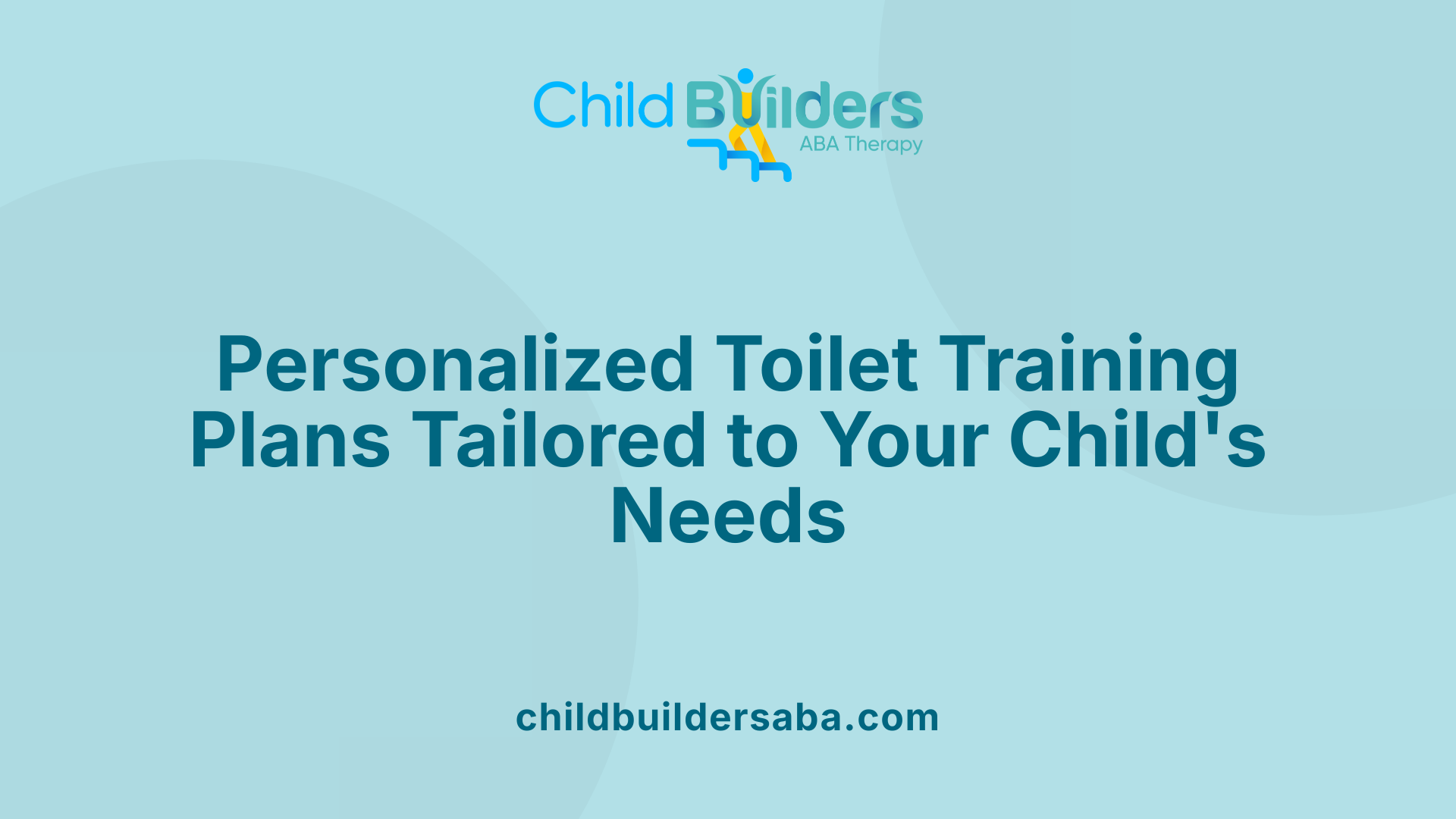
How should a toilet training plan be individualized for a child with autism?
An effective toilet training plan must be tailored to each child's unique developmental profile. This includes assessing their current motor skills, communication abilities, sensory sensitivities, and daily routines. Visual supports, such as picture schedules or social stories, are essential tools that help nonverbal children understand what to do at each step. Personal reinforcement, like favorite toys or activities, motivate children and should be chosen based on the child's preferences. Regular monitoring and flexibility are crucial, allowing the plan to adapt as the child progresses or encounters challenges.
What factors influence the development of an effective plan?
Various factors shape the success of a toilet training strategy. The child's individual strengths, such as responsiveness to visual cues or imitation skills, play a vital role. Challenges like sensory sensitivities, gastrointestinal issues, or difficulty with routine changes need to be addressed within the plan. The child's overall health, including the presence of constipation or other medical concerns, influences timing and approach.
Environmental considerations, such as the bathroom setup and noise levels, should be adapted to meet sensory needs. Input from caregivers, healthcare professionals, and educators ensures the plan remains comprehensive and consistent across different settings. This collaborative approach helps identify the most suitable methods and support tools, increasing the likelihood of success.
Why is collaborative planning important?
Coordinated efforts among parents, therapists, teachers, and other caregivers promote consistency, which is critical for learning new skills. When all team members understand and follow the same routines, children experience a stable environment that reduces anxiety and confusion. This collaboration also allows for sharing observations, troubleshooting difficulties, and adjusting strategies on a course that best suits the child's evolving needs.
By working together, caregivers can implement reinforcement strategies uniformly and ensure environmental modifications are maintained across settings. This unified approach enhances the generalization of toileting skills and fosters independence, helping children on the autism spectrum reach this important milestone more successfully.
Preparing Parents and Caregivers for the Toilet Training Journey
How can parents prepare for toilet training?
Parents play a vital role in helping their children develop toileting independence. Their preparation begins with understanding the signs of readiness, such as the child's ability to stay dry for at least two hours, follow simple instructions, and show interest in bathroom activities. It is also essential to gather appropriate materials like visual routines, a suitable potty chair, and reinforcement items such as stickers or small toys. Establishing a consistent routine and using positive reinforcement immediately after successful toileting are important steps. Additionally, parents should consult healthcare professionals to rule out medical issues like constipation or urinary infections that could hinder progress. Supporting the child's independence by practicing dressing skills and hand-washing routines back up the toileting process. Remaining patient and calm, especially during setbacks, encourages a positive experience, reducing anxiety for both the child and caregiver.
What role do visual supports play in preparation?
Visual supports are fundamental tools in the toilet training process, particularly for children with autism who may have limited verbal communication or sensory sensitivities. Using picture schedules, social stories, and visual cues helps children understand each step involved in using the toilet. These aids serve to decrease confusion, set clear expectations, and foster independence. For example, visual instruction charts illustrating the sequence from sitting on the potty to washing hands can make the process predictable and less intimidating. Visual supports can also assist children in signaling their needs, thus promoting communication skills and reducing frustration. Creating a visual routine tailored to the child's preferences ensures a more structured and supportive environment, which facilitates smoother learning.
Why is patience crucial?
Patience is essential because toilet training, especially in children with autism, often takes longer than in neurotypical children. It is common for progress to occur gradually with periods of setbacks or regression. Engaging in frequent emotional reassurance and celebrating small successes can sustain motivation and confidence for the child. Children may need weeks or months of consistent practice to develop habitual toileting routines. Rushing the process or expressing frustration can increase anxiety and make the process more difficult. By maintaining a calm, positive attitude and understanding that setbacks are normal, parents can create a supportive atmosphere that fosters ongoing progress. Remembering that each child learns at their own pace is fundamental to a successful toilet training journey.
Additional Resources, Support Networks, and Broader Considerations
Supporting families through the process of toilet training for children with autism involves accessing various resources and community support. Specialized guides that break down the steps in simple language, visual tools such as picture schedules and social stories, and online materials tailored for different learning preferences can make a significant difference.
Professional services, including behavior therapists, occupational therapists, and speech-language pathologists, are valuable for personalized strategies and ongoing guidance. Many communities offer programs specifically designed for children on the autism spectrum, providing practical assistance and family education.
Community and educational settings play a crucial role in supporting toilet training. Schools and childcare providers can embed inclusive policies, create sensory-friendly bathroom environments, and work closely with families to maintain consistent routines. These approaches help children transfer skills across settings and foster independence.
Advocacy efforts are essential to promote inclusive and respectful toileting practices. Raising awareness about the needs of children with autism, promoting acceptance, and ensuring that policies accommodate toileting differences help uphold the dignity and participation of all children. Ensuring access to suitable facilities and training staff on sensory sensitivities and communication needs supports equitable inclusion.
Overall, combining resources such as guides, visual supports, professional assistance, and advocacy fosters a supportive framework that encourages successful toilet training and promotes independence.
Empowerment Through Patience, Preparation, and Personalization
Potty training a child with autism requires understanding, patience, and a tailored approach that respects each child's unique developmental profile. Utilizing visual supports, environmental adjustments, and evidence-based strategies can make the journey smoother and more successful. Collaboration with professionals, educators, and families is essential to build routines and support systems that foster independence. Recognizing signs of readiness, supporting communication, and creating a nurturing environment empower children to achieve this important milestone, ultimately enhancing their confidence, dignity, and social participation.
References
- Seven toilet training tips that help nonverbal kids with autism
- Toilet training for autistic children
- What to Know About Toilet Training Your Child with Autism
- Toilet Training—Autism Toolkit | North Bethesda, MD
- Toileting - a guide for parents and carers - National Autistic Society
- Potty Training For Autism – The Ultimate Guide
- Toilet training interventions for children with autism spectrum disorder
- Ten Toilet Training Tips for Nonverbal Children with Autism |



.jpg)
